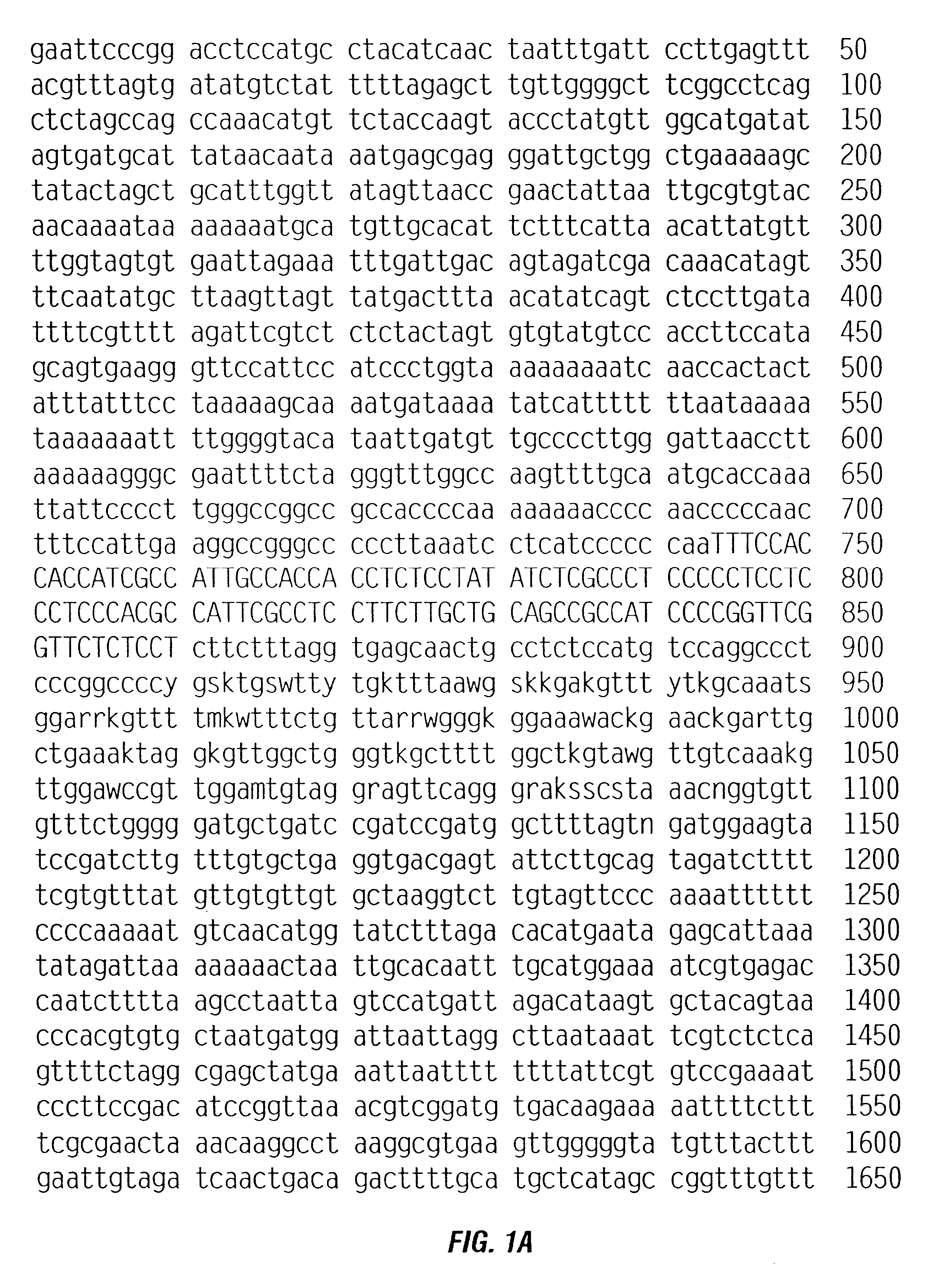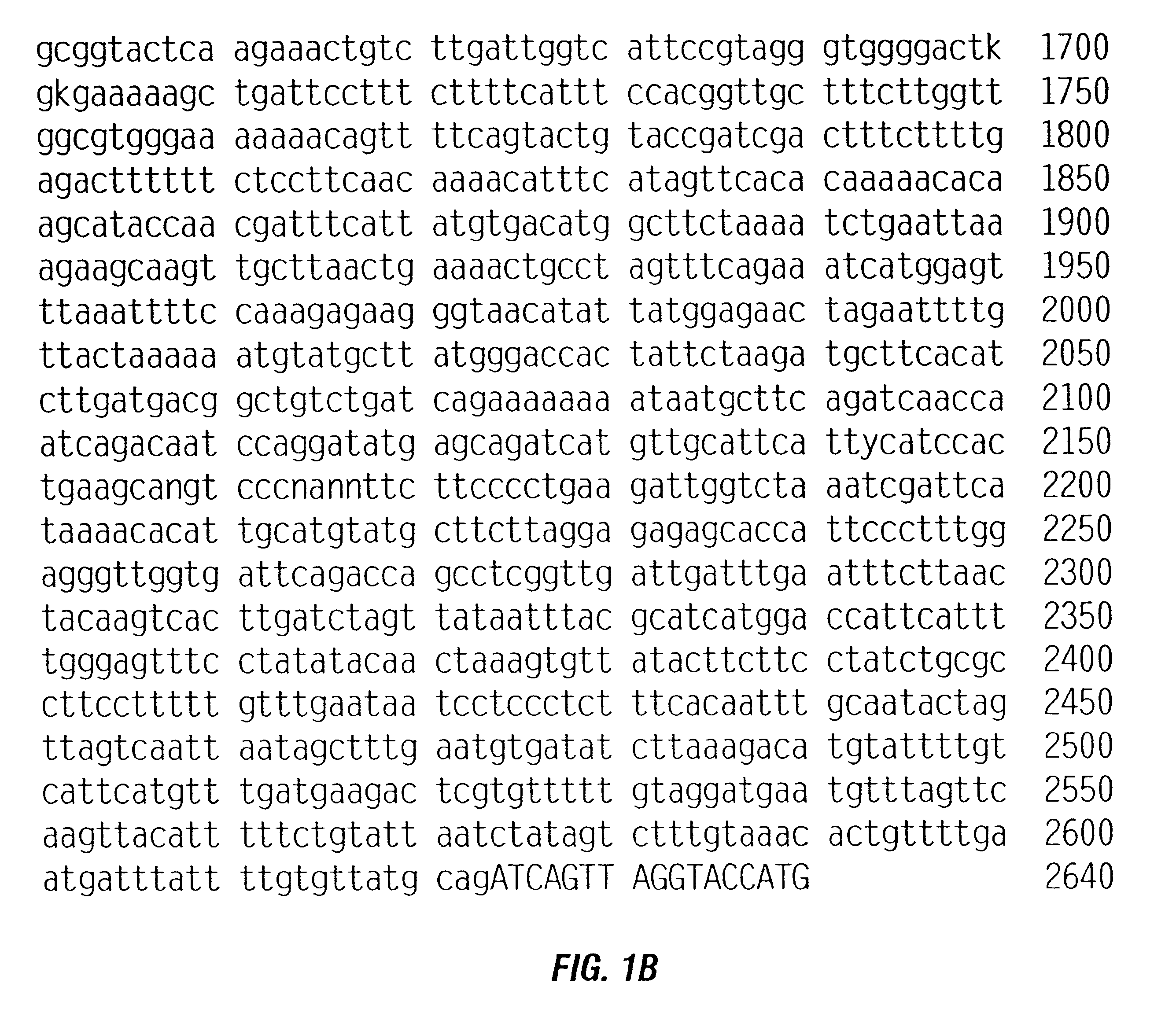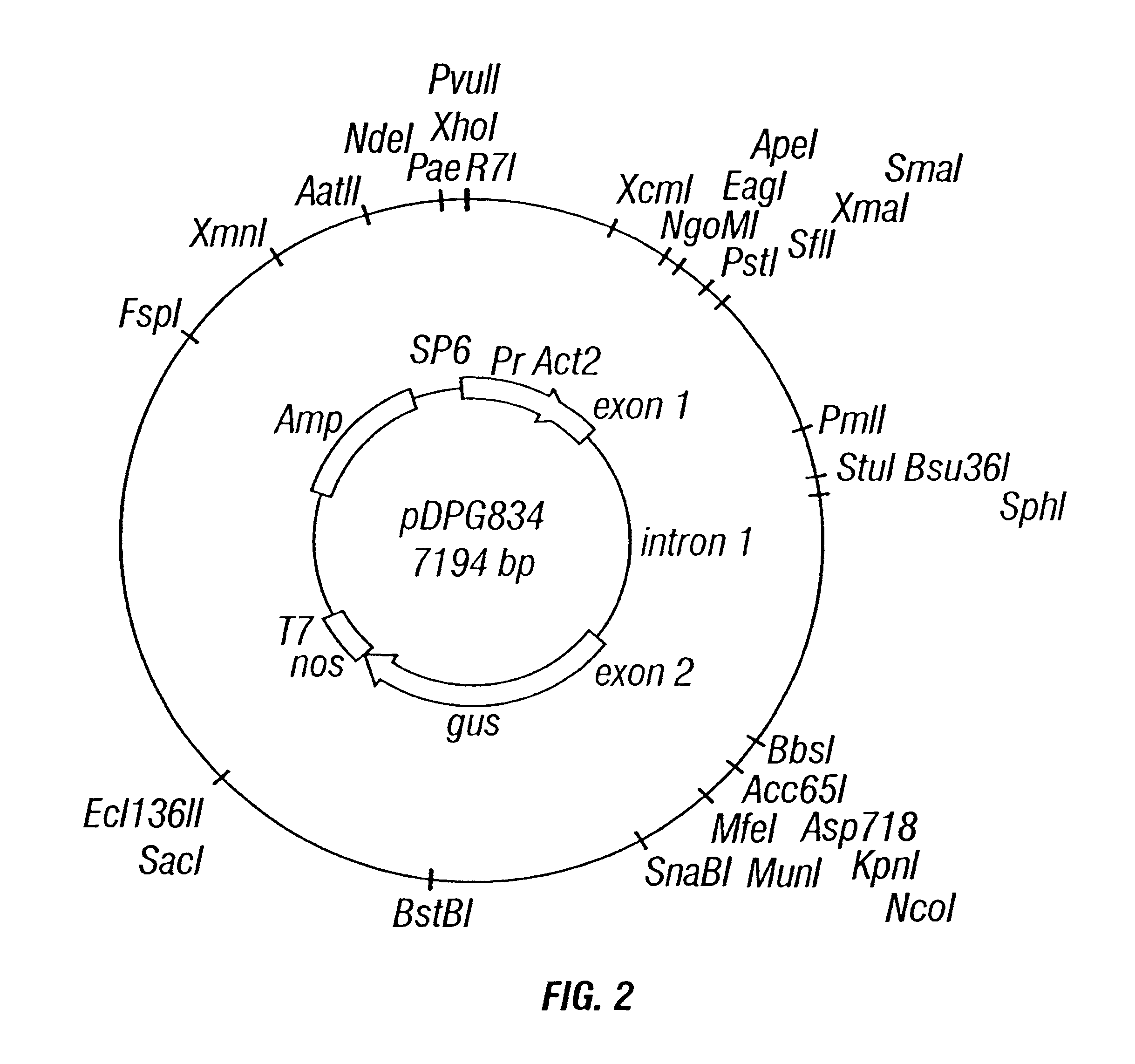Rice actin 2 promoter and intron and methods for use thereof
a technology of rice actin and promoter, applied in the field of transgenic plants, can solve the problems of reducing the nutritional quality of the diet of the plant, the inability of the art to identify the structure, sequence and function of the upstream regulatory region of rice actin 2, and the inability of the rice actin 2 upstream regulatory region to be expressed
- Summary
- Abstract
- Description
- Claims
- Application Information
AI Technical Summary
Problems solved by technology
Method used
Image
Examples
example 2
Preparation of Microprojectiles
Microprojectiles were prepared as follows: gold particles were prepared by adding 60 mg of 0.6 .mu.m gold particles (BioRad, cat. no. 165-2262) to 1000 .mu.l absolute ethanol and incubating for at least 3 hours at room temperature followed by storage at -20.degree. C. Twenty to thirty five .mu.l of the sterile gold particles and more preferably 30 to 35 .mu.l of gold particles (30 .mu.l contains 1.8 mg of particles) were centrifuged in a microcentrifuge for up to 1 min. The supernatant was removed and one ml sterile water was added to the tube, followed by centrifugation at 1800-2000 rpm for 2-5 minutes. Microprojectile particles were resuspended in 25-30 .mu.l of DNA solution containing about 50 nM of DNA in a 30 .mu.l solution.
Two hundred twenty microliters sterile water, 250 .mu.l 2.5 M CaCl.sub.2 and 50 .mu.l stock spermidine (14 .mu.l spermidine in 986 .mu.l water) were then added to the particle containing solution. The solution was then thorough...
example 3
Bombardment of Hi-II Immature Embryos
Immature embryos (1.2-3.0 mm in length) of the corn genotype Hi-II were excised from surface-sterilized, greenhouse-grown ears of Hi-II 10-12 days post-pollination. The Hi-II genotype was developed from an A188.times.B73 cross (Armstrong et al., 1991). Approximately 30 embryos per petri dish were plated axis side down on a modified N6 medium containing 1 mg / l 2,4-D, 100 mg / l casein hydrolysate, 6 mM L-proline, 0.5 g / l 2-(N-morpholino) ethanesulfonic acid (MES), 0.75 g / l MgCl.sub.2, and 2% sucrose solidified with 2 g / l Gelgro, pH 5.8 (#735 medium). Embryos were cultured in the dark for two to four days at 24.degree. C.
Approximately 3-4 hours prior to bombardment, embryos were transferred to the above culture medium with the sucrose concentration increased from 3% to 12%. When embryos were transferred to the high osmoticum medium they were arranged in concentric circles on the plate, starting 1 cm from the center of the dish, positioned such that t...
example 4
Transformation of H99 Immature Embryos or Callus and Selection with Paromomycin
Maize immature embryos (1.2-3.0 mm, 10-14 days post pollination) are isolated from greenhouse grown H99 plants that have been self or sib pollinated. Immature embryos are cultured on 735 medium in the dark at approximately 27.degree. C. Immature embryos are either bombarded 1-6 days after isolation or cultured to produce embryogenic callus that is used for bombardment. Embryogenic callus is expanded and maintained by subculturing at 2-3 week intervals to fresh 735 medium. Prior to bombardment, cultured embryos or embryogenic callus (subdivided in approximately 2-4 mm clumps) are transferred to 735 medium containing 12% sucrose for 3-6 hours. Following bombardment, carried out as described in Example 6, tissue cultures are incubated overnight and transferred to 735 medium containing 500 mg / L paromomycin. After 2-3 weeks, callus is subdivided into small pieces (approximately 2-4 mm in diameter) and transfer...
PUM
| Property | Measurement | Unit |
|---|---|---|
| distance | aaaaa | aaaaa |
| flight path length | aaaaa | aaaaa |
| pressure | aaaaa | aaaaa |
Abstract
Description
Claims
Application Information
 Login to View More
Login to View More - R&D
- Intellectual Property
- Life Sciences
- Materials
- Tech Scout
- Unparalleled Data Quality
- Higher Quality Content
- 60% Fewer Hallucinations
Browse by: Latest US Patents, China's latest patents, Technical Efficacy Thesaurus, Application Domain, Technology Topic, Popular Technical Reports.
© 2025 PatSnap. All rights reserved.Legal|Privacy policy|Modern Slavery Act Transparency Statement|Sitemap|About US| Contact US: help@patsnap.com



